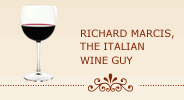Break out of the Routine This Year: Six Out-of-the-Ordinary Italian Wines to Expand Your Wine Horizon
Italy produces a tremendous amount and variety of wines. There are hundreds, if not thousands, of grape varieties throughout Italy and each of Italy’s twenty regions produces some amount of wine. While much of Italy’s wine production is consumed locally, a lot finds its way into the international market. Italy exports more wine to the U.S. than any other country.
The vast array of Italian wines displayed on wine shop shelves can be bewildering to American consumers trying to better understand and appreciate Italian wines let alone simply purchase a bottle of vino for that special get-together with friends. Intimidated by the variety of choices available and the sometimes impenetrable wine labels, many wine consumers simply take the easy way out and purchase old tried-and-true standards like Chianti or Pinot Grigio.
While understandable, it’s unfortunate because there are many finely-crafted and pleasurable wines from Italy on wine shop shelves that simply get overlooked because they’re not particularly well known and consequently outside the typical wine purchaser’s comfort zone. While it will take a little work to become better acquainted with these wines you may be rewarded by a new and rewarding taste experience as well as bragging rights when friends inquire about the new and exciting wine you selected for your next social gathering or dinner party. Moreover, because they are not highly sought-after wines they tend to be relatively less expensive than otherwise equivalent wines and can represent real value on a quality-to-price basis.
What follows is a review of six pleasurable, out-of-the-ordinary Italian wines that will give fillip to your plan to escape from the ordinary and expand your wine horizons this new year. While all six are generally available in major wine markets, some may be harder to find than others. But they are all well worth the effort.
The wines are presented alphabetically by producer.
Capezzana, “Villa di Capezzana” Carmignano 2007 (about $25)
The Capezzana estate is located in the historic Carmignano region that lies a short distance west of Florence. Ancient artifacts found in Etruscan tombs in the area indicate that wine has been produced here since pre-Roman times. The Capezzana estate is arguably the premier producer in the Cargmignano area today.
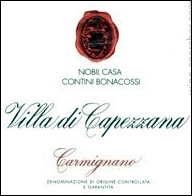 Even though the Carmignano zone received DOCG status in 1990, wines from this area are not as well-known as the wines from its world-famous and much larger Chianti neighbor. Carmignano wines must include a minimum of 80 percent Sangiovese grapes and no less than 10 percent or more than 20 percent Cabernet Sauvignon in the blend.
Even though the Carmignano zone received DOCG status in 1990, wines from this area are not as well-known as the wines from its world-famous and much larger Chianti neighbor. Carmignano wines must include a minimum of 80 percent Sangiovese grapes and no less than 10 percent or more than 20 percent Cabernet Sauvignon in the blend.
The 2007 “Villa di Capezzana” is an 80 percent Sangiovese and 20 percent Cabernet Sauvignon blend. After fermentation, the wine is aged in a combination of small and large oak casks for 15 months followed by 10 additional months in the bottle prior to release for sale.
It is a full-bodied, rich wine bursting with intense black cherry and currant flavors interspersed with kitchen spice notes. It is well structured with pleasant acidity and firm tannins and the long-lasting finish is a real bonus. This is a wine to accompany grilled red meats, beef bourguignon, lamb chops with a balsamic reduction, mushroom risotto and aged cheeses.
While ready to drink now, this wine will age well for another decade.
Carminucci, “Naumachos” Rosso Piceno Superiore 2009 (about $17)
The Marche (mar kay) region in east central Italy may well be Italy’s least well-known wine region. Some interesting and distinctive red and white wines have been produced here for centuries but these wines have for most of modern history been largely overshadowed by wines from other close-by regions such as Umbria and Tuscany. While the region is probably most well-known for its superb white wines made from the Trebbiano and Verdicchio varieties, neither its red or white wines are especially well known in the U.S.
Rosso Piceno (roh’ so pih chae’ no) is, along with Rosso Conero, one of the Marche’s best and most popular red wines. The Rosso Piceno DOC was the region’s first DOC and comprises a sprawling zone that extends from the region’s southern border into the central provinces of the Marche region.
the Marche’s best and most popular red wines. The Rosso Piceno DOC was the region’s first DOC and comprises a sprawling zone that extends from the region’s southern border into the central provinces of the Marche region.
The DOC regulations require that at least 85 percent of a Rosso Piceno DOC wine must consist of Sangiovese and Montepulciano grapes while other local red varieties can make up the remaining 15 percent. Typically, the Sangiovese adds body, bright acidity and structure to the blend while the Montepulciano contributes fruit flavors and spice notes.
Wines labeled Rosso Piceno Superiore are produced in a limited area in the province of Ascoli Piceno and differ from regular Rosso Piceno in that they have to be aged in wood casks that impart more intense and variegated aromas and flavors to the wine.
The Carminucci winery was founded in 1928 and today has approximately 75 acres of vineyards in the in the gently rolling hills of the Grottammare zone. The estate grows primarily Montepulciano and Sangiovese grapes in addition to some local white varieties.
The 2009 Carminucci “Naumachos” (car mi nooch’ chi no mock’ os) Rosso Piceno Superiore consists of 70 percent Sangiovese and 30 percent Montepulciano. It has a dark, almost-brooding color that reveals a rich, full-bodied wine with good tannins. It is a serious but voluptuous wine, warm and smooth, with concentrated dark fruit flavors with some spicy, earthy notes underpinning the fruit. There’s a lot of wine to love here at a very reasonable price.
This is a great wine to serve with roast meats, game, lamb, lasagna and other full-flavored dishes.
COS, Cerasuolo di Vittoria Classico 2009 (about $30)
Cerasuolo di Vittoria (chera swo’ lo dee veet tor’ ee ah) is a red wine produced in the area around the small, scenic town of Vittoria in southeastern Sicily. Cerasuolo di Vittoria wines are the only DOCG-designated wines produced in Sicily and these distinctive wines may well be the most exciting wines coming out of Sicily today.
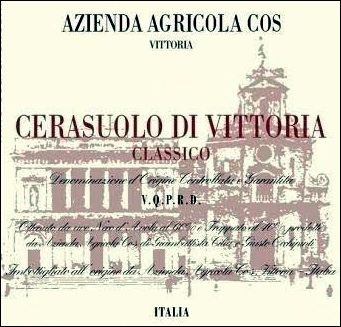 Cerasuolo di Vittoria wines are a blend of two indigenous Sicilian varieties – Nero d’Avola, arguably Sicily’s best red wine grape, and Frappato (frahp pat’ toe). Nero d’Avola grapes contribute rich fruit flavors and bracing acidity while low-acid Frappato grapes add floral aromas and freshness to the mix. These wines are distinctive and delicious with good acidity and can age well in your cellar for up to twenty years.
Cerasuolo di Vittoria wines are a blend of two indigenous Sicilian varieties – Nero d’Avola, arguably Sicily’s best red wine grape, and Frappato (frahp pat’ toe). Nero d’Avola grapes contribute rich fruit flavors and bracing acidity while low-acid Frappato grapes add floral aromas and freshness to the mix. These wines are distinctive and delicious with good acidity and can age well in your cellar for up to twenty years.
The COS winery gets its name from the first letters of the surnames of the original three founders of the winery - Giambattista Cilia, Giusto Occhipinti and Pinuccia Strano. The three long-time friends started the winery in the early 1980’s as a part-time hobby. But when business took off quickly in response to the enthusiastic reviews their wines received, they decided to make it a serious, full-time pursuit. Today the winery is regarded as one of southern Italy’s premier wineries
The COS winery has adopted a holistic, biodynamic approach to winemaking. All their wines are made from grapes that are grown organically and biodynamically and they emphasize a natural approach to winemaking.
The COS estate’s 2009 Cerasuolo di Vittoria Classico consists of 60 percent Nero d’Avola and 40 percent Frappato. It has expressive floral aromas and juicy cherry fruit flavors. Medium-bodied and dry with lively acidity and soft tannins, it is a refreshing alternative to the heavy, baked-fruit-flavor wines historically associated with Sicily.
Jermann, “Vintage Tunina” 2009 (about $60)
This wine is from the Friuli-Venezia-Giulia (generally referred to simply as Friuli) region in northeastern Italy. Friuli shares a border with Austria on the north and Slovenia on the east and is about as far north in Italy as you can get and still be in Italy. The climate as you might expect is cool and the vineyards hug the south-facing hillsides for maximum sun exposure.
This is white wine country and the Vintage Tunina produced by Silvio 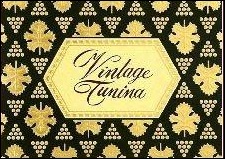 Jermann is one of the area’s - and Italy’s - best white wines. It is a serial recipient of Gambero Rosso’s prestigious Tre Bicchieri award and was recently ranked number 5 in Gambero Rosso’s listing of the 25 best white wines in Italy.
Jermann is one of the area’s - and Italy’s - best white wines. It is a serial recipient of Gambero Rosso’s prestigious Tre Bicchieri award and was recently ranked number 5 in Gambero Rosso’s listing of the 25 best white wines in Italy.
Vintage Tunina was first released in 1975 and is a field blend of five native white varieties from the Friuli region. The exact percentages of the various grapes utilized are a secret and changes from year to year. The grapes are late harvested, vinified together and then fermented and aged in stainless steel tanks.
The 2009 Vintage Tunina is full-bodied and intense but also well balanced and elegant. It is dry and pleasantly acidic with layers of white fruit flavors that go well with most first courses, especially if they involve mushrooms or truffles, as well as chicken and fish dishes. But this full-bodied white also has the stuffing to accompany more structured dishes involving pork, rich seafood, and Fois Gras. Unlike most white wines this wine will age well and can last up to 10 years after vintage.
This delicious and distinctive white wine may well be the ultimate rebuttal to the oft-heard comment that “all Italian white wines taste alike.”
Nino Negri, Sfursat della Valtellina DOCG 2007 (about $40)
The Valtellina region is located in the northern-most part of the region of Lombardy close to Italy’s border with Switzerland. It’s a rugged, mountainous terrain and an unlikely setting for growing wine grapes. But the vineyards are there and you can see the terraced vineyards precariously hugging the upper reaches of the south-facing mountainsides. Because of the steep, nearly vertical, terraced vineyards, use of any mechanical farm equipment is impossible and the vineyards are tended and harvested manually, a laborious and expensive process.
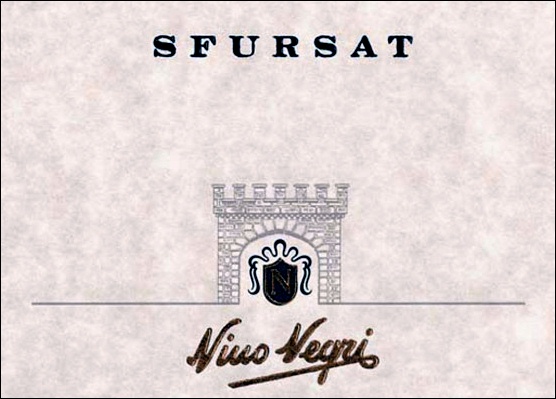 The primary grape variety grown here is Nebbiolo, known locally as Chiavennasca (key ah ven nas’ ka). It is one of the few areas outside of the Piedmont region where the Nebbiolo variety has flourished.
The primary grape variety grown here is Nebbiolo, known locally as Chiavennasca (key ah ven nas’ ka). It is one of the few areas outside of the Piedmont region where the Nebbiolo variety has flourished.
The Nebbiolo-based wines produced here are known as Valtellina. There are several types of Valtellina wines and most are finely-textured, delicate wines that are best served when young. However, one version known as Sfursat (s’foor sat) is completely different and may be thought of as Valtellina’s version of the world-famous Amarone wines from the Veneto region.
Harvested by hand from vines in in the best vineyards, the Nebbiolo grapes are placed in small crates and left to slowly dry in the cool, dry mountain air. The grapes shrivel and lose about a third of their weight during this drying process and the grapes’ natural sugars become more concentrated.
After approximately 4 months, the grapes are gently crushed and fermented. After fermentation the grapes are left to age in small oak casks for up to 2 years before bottling, a process not dissimilar to that for Amarone wines. Like the best Amarone wines, Sfursat Valtellina wines with their delicate bouquets, dried-fruit flavors and alcoholic richness are wines to savor. They are robust wines that go well with equally hearty dishes involving roasted red meats, lamb, game, stews and aged cheeses.
Nino Negri is the region’s largest winery and one its finest producers. The winery produces a variety of Valtellina wines but the Sfursat wines are the pride of the winery. Its 2007 Sfursat Valtellina is made entirely with Nebbiolo grapes that have been fermented and aged in small oak casks for 22 months before bottling. It is a dry, warm and full-bodied with an elegant finish. It also is a long-lived wine that will age gracefully for another 15 years.
This wine should breathe for 2 to 3 hours to soften the tannins and then be decanted prior to serving.
Tre Monti, “Petrignone” Sangiovese di Romagna Superiore Riserva 2010 (about $20)
This wine is from the Emilia Romagna region which lies directly south of Veneto region in northeast Italy. The region covers a relatively large geographic area that stretches from the Adriatic Sea westward along the Po River almost to the city limits of Milan. Although the Emilia Romagna region has twenty DOC-designated wine zones and one DOCG, it is probably better known for its food and cheeses than its wines.
Perhaps the most prominent red wine area of this region is the 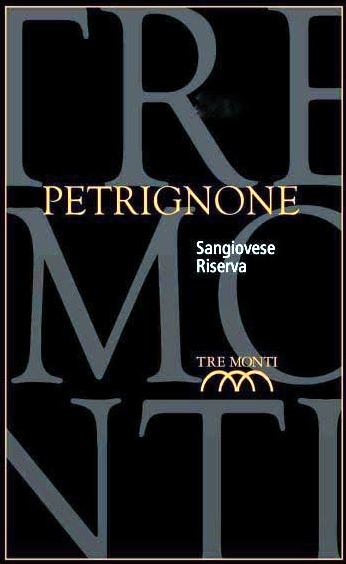 Sangiovese di Romagna DOC. Wines from this DOC-designated area are made primarily with Sangiovese di Romagna grapes, the local clone of the Sangiovese variety commonly grown throughout central Italy. While this wine can be produced in a variety of styles it must be made primarily from Sangiovese but can include up to 15 percent other permitted local red varieties.
Sangiovese di Romagna DOC. Wines from this DOC-designated area are made primarily with Sangiovese di Romagna grapes, the local clone of the Sangiovese variety commonly grown throughout central Italy. While this wine can be produced in a variety of styles it must be made primarily from Sangiovese but can include up to 15 percent other permitted local red varieties.
Tre Monti’s 2010 “Petrignone” Sangiovese di Romagna Superiore Riserva is made entirely of Sangiovese di Romagna grapes from the estate’s vineyards. The “Superiore” designation indicates that the grapes are sourced from best areas of the zone and that the wine contains at least 12 percent alcohol while the “Riserva” designation indicates that the wine has been aged for at least two years.
This medium-weight wine has a bright ruby red color and intense dark fruit aromas and flavors, fresh acidity and delicate tannins. The wine would be a welcome addition to any dinner where mushroom risotto, pork tenderloin or grilled red meats are on the menu. While ready to drink now, the wine will age gracefully for at least another decade.
©Richard Marcis
January 2014
For reveiws of other Italian wines, see italian wine reviews

